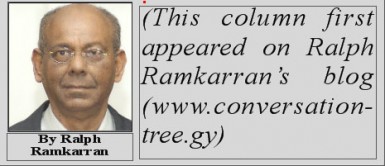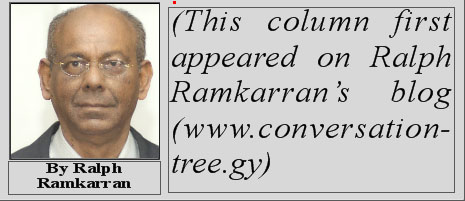The Alliance For Change (AFC) made its position on Amaila known from the outset. It said that it would rely on the outcome of the IDB’s assessment in order to determine whether or not to support the project. The AFC joined others in expressing its concerns but when confronted with Sithe Global’s position that unless there was full opposition support for the legislation, it would terminate its interest, the AFC quite consistently decided that it would vote to let the project live until the crucial IDB report was available.
Its Chairman’s professional association with Sithe Global may have complicated the situation for the AFC. The criticisms of the AFC appear to suggest that it opportunistically voted for the legislation at the behest of its Chairman. But in fact the AFC was maintaining its consistency and credibility while protecting its electoral and political interests.
The AFC is a third party in Guyana with no ideological or class base or distinct political philosophy.
 So far it has received only a protest vote but unlike all other third parties, it increased its vote at the second elections it contested. In the 2006 elections its support came from disaffected PNCR supporters. In 2011 that vote evaporated.
So far it has received only a protest vote but unlike all other third parties, it increased its vote at the second elections it contested. In the 2006 elections its support came from disaffected PNCR supporters. In 2011 that vote evaporated.
Instead it got the disaffected PPP vote. Immediately the PPP launched a campaign to paint the AFC as part of APNU. We all know what that implied and was intended to accomplish. For substantial political reasons, therefore, the AFC had to define itself, create its own identity and carve out its own political space, which it has been doing.
Third parties in Guyana have not done well. There have been many. The best organized, best funded and longest surviving was the United Force. Formed in the early 1960s, it had a conservative ideological orientation and a political base in the business, Catholic, Amerindian and the then large Portuguese communities.
It also had multi-ethnic support and secured 12 per cent of the vote at the 1964 elections. Joining with the PNC in the 1964 PNC-UF coalition government, the UF began to decline with the rigging of elections in 1968 and the retirement shortly after of its leader, Peter D’Aguiar.
The Working Peoples’ Alliance came on the scene in 1974. It captured the imagination of the multi-ethnic disaffected, including youth, had a large following and espoused revolutionary socialism as its political philosophy. While by 1980, the WPA had lost some of its appeal because of oppression and assassinations, particularly of its most popular leader, Walter Rodney, it never had the opportunity to prove its electoral strength at the height of its popularity.
By 1980 it had already begun to wane and the elections of that year and 1985 were rigged. WPA leaders have attributed loss of support to ‘tribal’ politics in Guyana, that is to say, ethnic based voting patterns.
The AFC was established in 2005 by Raphael Trotman, Khemraj Ramjattan and the late Sheila Holder, who were members of the National Assembly representing the PNCR-1G, the PPP/C and the WPA respectively. Messrs Trotman and Ramjattan had resigned from their parties and Mrs Holder later resigned from the WPA.
The AFC is fully aware that it needs to recapture the votes from the PNCR that it lost as well as to maintain and expand its support from disaffected PPP supporters. While this needs very hard work and a sensible and creative political strategy, the PPP is making it easy for them by its abusive political strategy and go it alone policy.
The continuing difficulties in the sugar industry continue to create opportunities for the AFC to recruit support and its work among rice farmers, despite the growth in the rice industry, and Amerindians are paying dividends.
The political strategy that the AFC seems to be conscious of is that it must never give the appearance that it will join APNU against the interests of PPP supporters. Those disaffected still have sympathy for their party, the PPP, but feel that it has strayed from its goals and principles and has not delivered.
A larger number of PPP supporters than at the last elections would stay at home at the next elections or vote for the AFC but not if they feel that the AFC would join with APNU to destroy the PPP. The PPP is aware of this hence their strategy towards the AFC described above.
The PNCR, the major partner of APNU, has not yet recognized the need to say something to PPP supporters about its policies of the past which they still believe targeted them. Only then will it be able to successfully court disaffected PPP supporters or at least remove the fears which still exist of the PNC among this large block of voters and make it easier for the AFC.
The vote in the National Assembly by the AFC is a major statement defining its strategy. The issue before the National Assembly was whether Amaila, which has public support, should live or die before the IDB report. The AFC decided that there was no reason to kill Amaila now. This decision emphasized its independence, separated it from APNU and demonstrated to PPP supporters that it is can be trusted to protect the nation’s interests.






